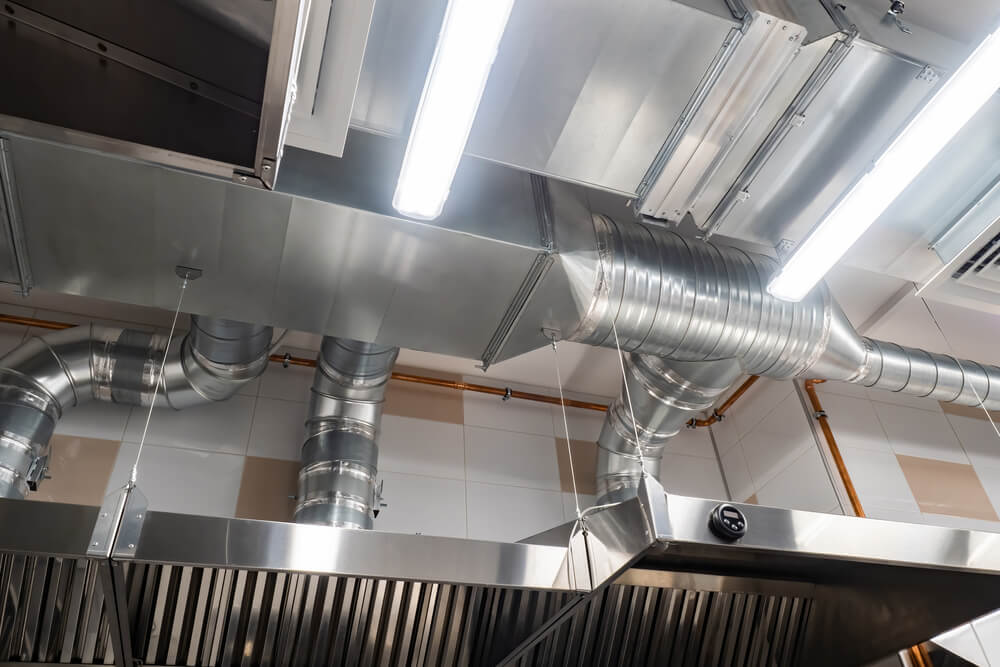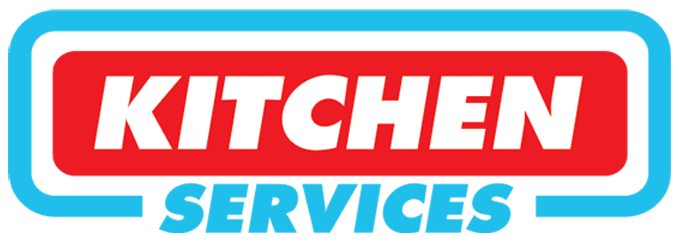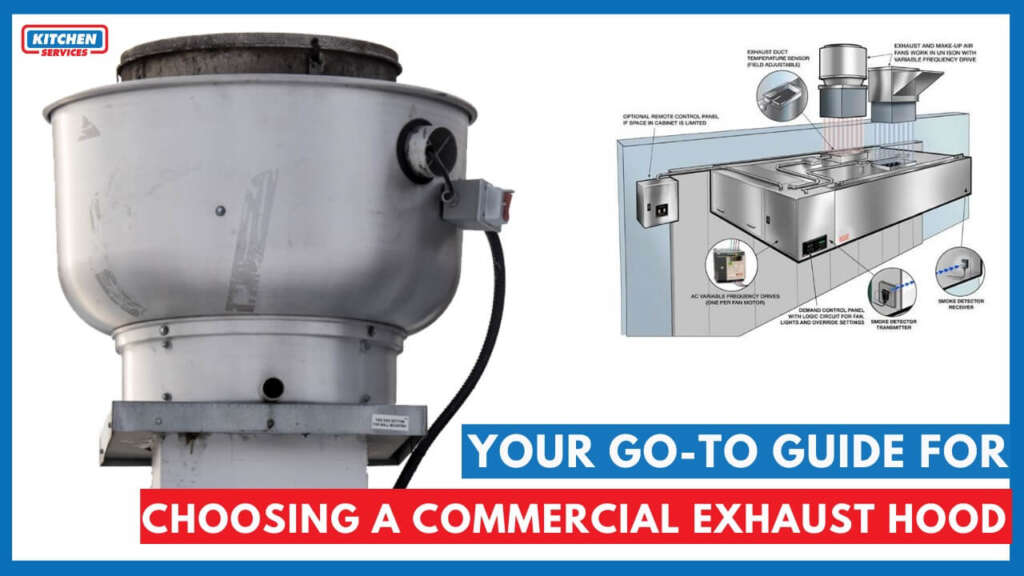We are all well aware of the fact that a commercial exhaust hood is really very important for the proper functioning of your Commercial Kitchen. Some kitchen hood systems are designed in such a way that they can remove hot air, steam, and smoke, apart from many other exhaust hoods that tend to use filters in order to remove grease and other food particles. Every restaurant ventilation regulations need the proper use of venting systems for their commercial kitchens that are abiding by the rules told by local codes.
Kitchen exhaust hoods are basically made for the purpose of removing combustion elements as well as fumes that are caused by cooking equipment and then recirculating cleaner air back into your commercial kitchen. Without having an appropriate hood system installed above your commercial range or fryer, all that grease will collect above your cooking equipment, and it can also become one of the reasons of fire hazards. We have a huge collection of kitchen hood products that includes condensate hoods which are specially designed to remove hot air and steam which is caused by dish machines, as well as ventless hood systems that can be used in small kitchens that cannot support a traditional hood system.
Factors to consider while Choosing Commercial Exhaust Hood

When choosing a commercial exhaust hood, several factors should be considered to ensure it meets your kitchen’s needs and complies with regulations. Here’s a breakdown:
1. Type of Hood
- Wall-Mounted: Attached to the wall, suitable for single cooking stations.
- Island: Suspended from the ceiling, ideal for open kitchen designs.
- Canopy: Covers a cooking area with a built-in filter system, common in large kitchens.
- Down-Draft: Integrated into the cooking surface, suitable for certain types of cooking equipment.
2. Size and Dimensions
- Width: Should match or exceed the size of the cooking equipment beneath it.
- Depth: Must be deep enough to capture smoke and fumes effectively.
- Height: Ensure proper clearance above cooking surfaces for safety and effectiveness.
3. Airflow and CFM Rating
- Airflow Capacity: Measured in cubic feet per minute (CFM), it should be adequate for the volume of air generated by your cooking equipment.
- Ventilation Needs: Higher CFM ratings are required for heavy-duty cooking operations.
4. Type of Cooking Equipment
- Grills, Fryers, Ovens: Different equipment generates varying amounts of heat, smoke, and grease, impacting the hood’s requirements.
- Specific Requirements: Some equipment may require special types of hoods or additional features like fire suppression systems.
5. Filtration System
- Grease Filters: Essential for trapping grease and preventing buildup in the ductwork.
- Charcoal Filters: Useful for reducing odors, particularly in establishments where odor control is crucial.
6. Ductwork Configuration
- Horizontal vs. Vertical Ducts: Consider the layout of your kitchen and the length of ductwork needed.
- Duct Size and Material: Ensure it matches the hood’s specifications and complies with local codes.
7. Fire Suppression System
- Integrated System: Many commercial hoods come with built-in fire suppression systems for safety.
- Compliance: Ensure the system meets local fire codes and standards.
8. Noise Level
- Decibel Rating: Higher airflow can lead to increased noise; consider quieter models or additional soundproofing if noise is a concern.
9. Maintenance and Cleaning
- Ease of Cleaning: Look for hoods with removable filters and smooth surfaces for easier maintenance.
- Access to Ductwork: Ensure ductwork is accessible for regular inspections and cleaning.
10. Energy Efficiency
- Lighting: Choose energy-efficient lighting for the hood area.
- Fans and Motors: Select models with energy-efficient components to reduce operating costs.
Also Read: CFM for Commercial Kitchen Exhaust
Top Commercial Kitchen Hood Manufacturers

- Signature Kitchen Suite 47.88″ Stainless Steel Pro Style Wall Hood (SKSPH4802S): This one is a Wi-Fi enabled signature kitchen suite range hood and it makes a smooth transition into the smart kitchen so this one is our overall favorite range hood pick.
- Zephyr Core Collection Breeze I Series 24″ Under Cabinet Range Hood-Stainless Steel (AK1124S): this one is Reasonably priced and possesses a low-profile design, this one is the best budget range hood from Broan and it can be the ideal choice for your apartments, condos, or cozy kitchens etc.
- La Cornue Cornufe 110 43.3″ Royal Blue Wall Mounted Chimney Hood (C1RC) : this is full of quality engineering, the Cornue Cornufe 110 high-end range hood will give you a celebrating French excellence with more than one way in your commercial kitchen.
- Bosch 500 Series 36″ Pull-Out Hood (HUI56551UC): this one has a convertible design which gives this Bosch range hood a great scope of performance which is ideal for the high-heat output of all your gas cooking appliances.
- Pro Collection Tempest II 30″ Pro Style Wall Ventilation (AK7500BS): because of the reason that this best under-the-cabinet range hood from Zephyr is sleek does not mean that its performance shall go unnoticed.
- Broan® 41000 Series 30″ Stainless Steel Ductless Under Cabinet Range Hood (413004): this one has a ductless design, this Broan under the cabinet range hood can be installed in a lot of places including your commercial kitchen.
- KitchenAid® 36″ Black Stainless Steel with PrintShield™ Finish Wall Mount Canopy Range Hood (KVWB606HBS): This one is also one of the best KitchenAid ducted range hood as it will give your commercial kitchen a very powerful ventilation setup that also in full of style.
- ZEPHYR Pro Collection Titan Wall 48” Por Style Ventilation (AK7648AS): This one is the finest Zephyr wall-mounted range hood as it is a very serious performer that has a long list of add-ons that provide even more utility in its functionality.
- Thermador® Professional 54″ Island Hood-Stainless Steel (HPIN54WS): Whether or not your island kitchen features the unparalleled power of a Thermador cooktop, this best Thermador island range hood quickly takes care of unwanted air pollutants in the kitchen.
Low Profile Commercial Exhaust Hood
Low-Profile Commercial Kitchen Exhaust w/ Makeup-Air Hood NFPA-96 NSF 20″ X 48″ X Length that costs around $699.99 – $1,700.00. This one is considered as a Low-Profile kitchen exhaust hood that also has a makeup air chamber in it. This kind of hood tends to remove every sort of grease air from your entire kitchen, and also brings fresh air back into your commercial kitchen. The entire fresh air comes out from the louvers in the front. This hood is actually Low-Profile which basically means its front is shorter as compared to the back of the hood. This low-profile design is particularly used in any basement or in places where the ceiling is low. It comes with a filter as well as a grease cup in the package.
Commercial Exhaust Hood Buying Guide FAQs
How much does a commercial exhaust hood cost?
So, the average cost of installing a commercial hood varies from $964 to $1,174 per square foot. A 12-foot-long kitchen range can cost you around $12,828 for its installation. Most of the commercial hoods measure around 10 to 14 feet long which makes the entire installation cost $9640 on the lower side and $16,436 on the higher side depending on the size of your kitchen.
How does a commercial kitchen hood system work?
Basically, commercial kitchen vent hoods tend to manage the flow of grease and grease vapor to eject out any sort of odor and all air pollutants as well as they tend to remove any moisture that is there in the air. The exhaust fan usually creates a reverse draw of the airflow from the hood to remove smoke, soot, steam, heat, and grease vapors away from your entire building.
How do you size a commercial exhaust hood?
To define the accurate size of your range hood system in order to install, National Fire Code (NFC) determines that the hood should be 6 inches larger on all sides as compared to all of the equipment that is under it. For this purpose, you must consult your local Building Code Office to find out if they require more extensions.
Do you need an extractor fan in a commercial kitchen?
So basically, the extractor fans are somehow the legal requirement in any commercial or industrial kitchen that uses grillers, gas cookers, stovetops as well as all sort of tandoori ovens in order to cook or grill food. There are various main components to your commercial kitchen extractor hood system of which each has a different, but very important role.
What are the requirements for a commercial exhaust hood?
A commercial exhaust hood must meet specific requirements to ensure effective ventilation and safety. It should be appropriately sized for the cooking equipment, with sufficient airflow capacity (measured in CFM) to handle the volume of smoke and grease. It must include grease filters, comply with local fire and building codes, and integrate a fire suppression system if required. Additionally, the hood should facilitate easy cleaning and maintenance while minimizing noise.

